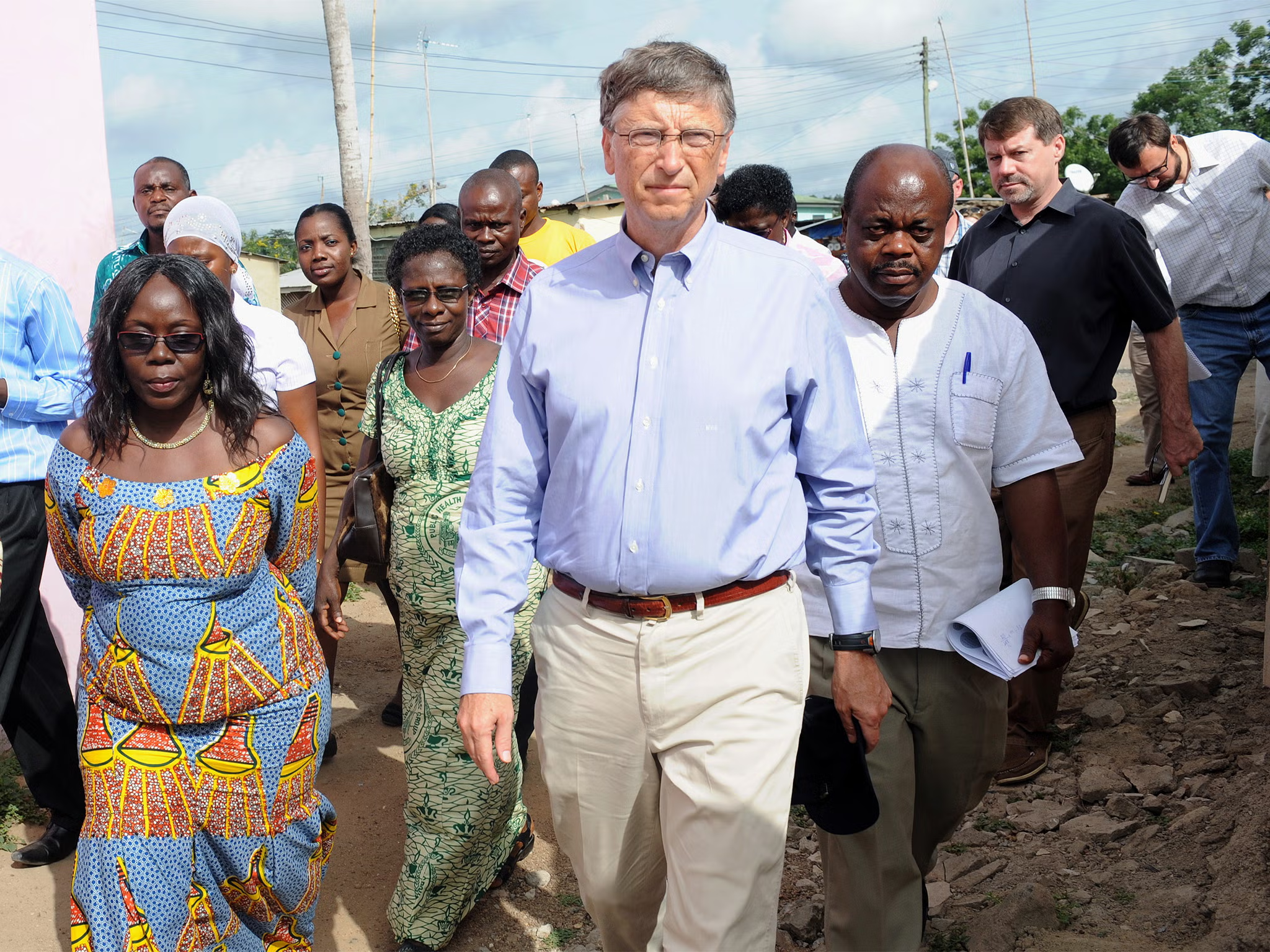
Beyond the details of seeds, vaccines, or clouds, the biggest controversy may be Gates himself. His Foundation operates on a scale larger than most UN agencies. With money comes influence: in setting agendas, shaping policies, even guiding research priorities. But Gates is not an elected leader. Nobody voted for him to decide what Africa plants, how India runs digital IDs, or how the world responds to pandemics. Yet, through sheer wealth, he does. Critics call this the democratic deficit of philanthro-capitalism. Yes, his money saves lives. But it also steers the future toward corporate-friendly, tech-heavy solutions. In many ways, the world is outsourcing problem-solving to a billionaire’s worldview.
When people hear the name Bill Gates, the first image that often comes to mind is the nerdy Microsoft founder who became one of the richest men alive. But in the last two decades, Gates has worked hard to shift that image. Today, he wants to be remembered less for Windows and more as the man who poured billions into saving lives, eradicating diseases, and fixing the world’s most stubborn problems. On paper, that sounds heroic. The Bill & Melinda Gates Foundation is the world’s largest private philanthropy, with influence that rivals governments. Its annual budget often dwarfs what entire countries spend on healthcare or education. Gates has poured money into vaccines, agriculture, education, climate research, and global health systems. Millions of children have been immunized because of his money. Malaria deaths have declined. Access to HIV drugs has expanded.
But dig deeper, and you find a complicated, often uncomfortable reality. The same projects that win him praise also spark fierce criticism. To some, he is the modern-day savior of global health. To others, he is the poster boy of philanthro-capitalism — a billionaire who uses generosity as a tool to extend corporate power into every corner of the globe. This tension—between lifesaving outcomes and controversial methods—is the story of Bill Gates’ projects.
The GMO Gamble in Africa
Few of Gates’ ventures have drawn as much fire as his agricultural crusade in Africa. Through the Alliance for a Green Revolution in Africa (AGRA), he championed a farming revolution powered by genetically modified seeds, chemical fertilizers, and high-yield crops. The idea was straightforward: if modern science could feed the West, it could feed Africa too. But the reality on the ground told a harsher story.
Independent reviews of AGRA’s impact found little to celebrate—yields stagnated, hunger persisted, and poverty barely moved. Farmers in Kenya, Tanzania, and beyond found themselves locked into a costly cycle: buying patented seeds and fertilizers each season instead of saving their own. The promised self-sufficiency turned into dependency—on companies like Monsanto (now Bayer), whose grip on seed markets only tightened. Biodiversity also suffered. Traditional crops like millet, sorghum, and indigenous vegetables were quietly sidelined for imported “miracle” maize. When drought came, those hybrid maize crops withered, and debts mounted. What was pitched as a revolution felt, to many farmers, like a trap.
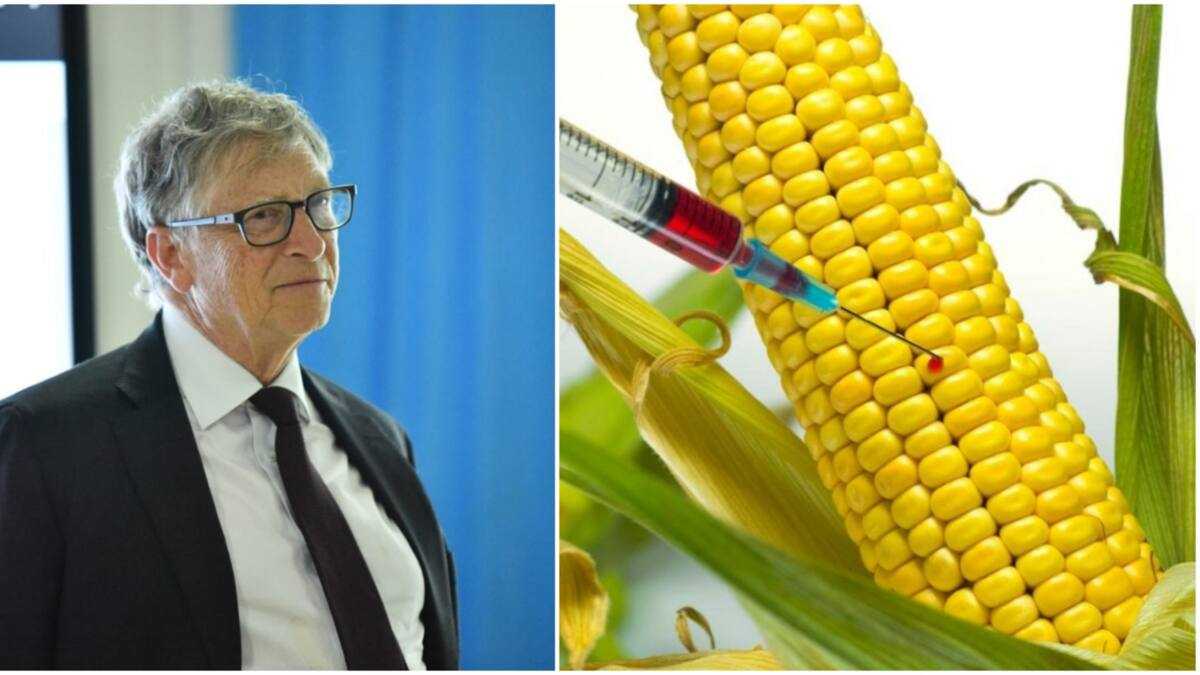
A 2020 Tufts University study confirmed what communities had long whispered: the billions poured into AGRA enriched corporations more than farmers. Instead of ushering in food security, the program eroded it. Yet, when challenged, Gates rarely flinches. He frames resistance to GMOs as “anti-science,” insisting Africa needs modern tools, not nostalgia, to feed its people. But for farmers staring at empty granaries and rising debts, the argument is less about science and more about sovereignty—who gets to decide what Africa grows, eats, and preserves.
Golden Rice and the Silver Bullet Problem
Closely tied to Gates’ agricultural vision is his enthusiasm for “biofortified” crops—genetically engineered foods with added nutrients. The poster child is Golden Rice, designed to deliver Vitamin A and marketed as a solution to childhood blindness. On paper, it looks noble. In reality, the backlash has been fierce.
Public health experts argue that malnutrition is rarely about one missing nutrient. It’s about poverty, inequality, and lack of access to diverse diets. A child doesn’t lose their sight because rice lacks Vitamin A; they lose it because their family can’t afford vegetables or varied food in the first place. By focusing on a “tech fix,” critics say Gates narrows the problem to a nutrient gap while sidestepping the deeper social and economic roots of hunger.
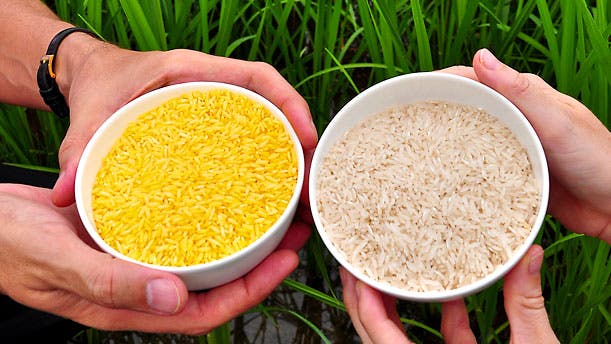
The Philippines became the frontline of this debate. Heavily backed by Gates Foundation money, Golden Rice trials were celebrated by scientists as a breakthrough. But farmer groups saw it as an imposition. In 2013, protesters stormed a test field and tore up the rice, declaring they didn’t need a silver bullet from a lab—they needed land, support, and food sovereignty.
Golden Rice thus became more than a crop; it became a symbol of the clash between lab-driven solutions and grassroots realities. For Gates, science was the answer. For many farmers, it was another reminder that the real fight was not in the lab but in who controls the land and the food system itself.
Vaccines, Pharma, and the COVID Storm
No project defined Gates’ global image more than vaccines. Today, his Foundation stands as the largest private donor to the World Health Organization, a position that gave him outsized influence during the COVID-19 crisis. When South Africa and India pushed for a waiver at the World Trade Organization to allow poorer nations to manufacture generic vaccines, Gates publicly resisted. He argued patents were essential to reward innovation. But in the Global South, that stance landed as betrayal. While the West secured doses and raced toward recovery, Africa waited in long, uncertain lines.
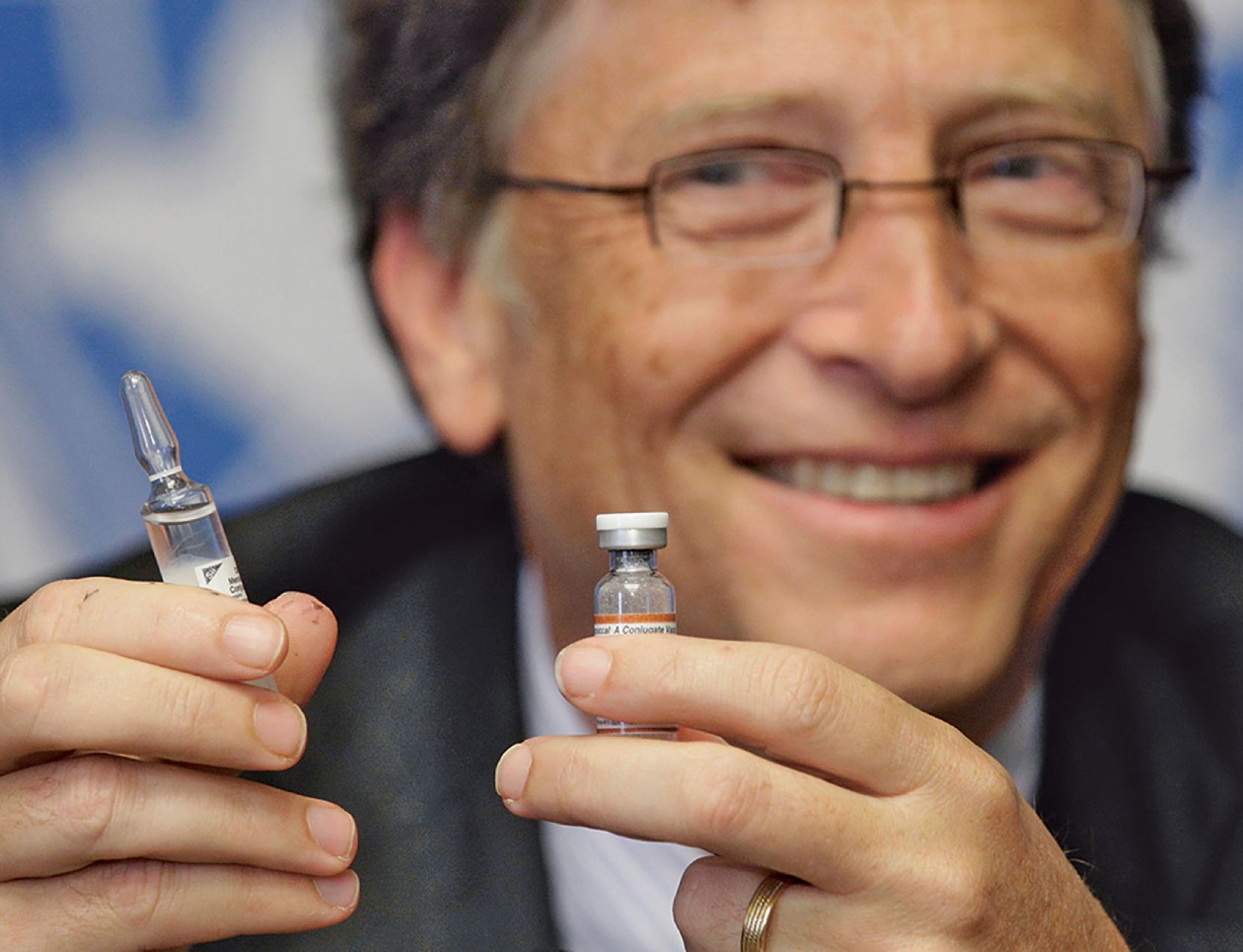
For South African health activists, this was not philanthropy but vaccine colonialism—a system where the rules of access were still written in corporate boardrooms, even in the middle of a global emergency. Gates’ approach, critics argue, revealed a pattern: he pushes hard for scalable, measurable interventions like shots in arms, but invests far less in the slow, unglamorous work of building hospitals, training doctors, or strengthening health systems. In his model, innovation takes precedence over equity, and speed of delivery often overshadows the deeper fight for justice.
Digital IDs and the Surveillance Question
Beyond health and farming, Gates has set his sights on identity itself. Through initiatives like ID2020, he has backed efforts to roll out biometric IDs for the billions who live without formal documentation. The pitch is tidy and optimistic: give people a digital identity, and suddenly they can open bank accounts, access healthcare, receive government aid, and join the modern economy. It sounds like empowerment. But the risks are far less tidy. In countries with fragile data protection, these systems can quickly morph from tools of inclusion into tools of control. A faulty scan, a server glitch, or a government blacklist could mean losing access to school, food aid, or medicine. What Gates frames as an efficiency upgrade, privacy advocates warn is a recipe for surveillance and exclusion.
India’s Aadhaar project—the world’s largest biometric ID system—is Gates’ favorite example. Covering over a billion people, it was designed to streamline welfare and financial access. And yes, for many, it has. But the darker side is impossible to ignore. Technical failures have left some without pensions or rations. Data leaks have exposed sensitive personal details. And for millions of India’s poorest citizens, Aadhaar has become less a gateway to services than a wall they cannot scale. For Gates, Aadhaar is proof that digital identity empowers. For critics, it is proof that techno-solutionism—throwing digital fixes at deep social problems—creates new vulnerabilities, often borne by the very people it claims to uplift.
Playing God with the Climate
Perhaps the most unsettling of Gates’ ventures is his investment in geoengineering—research into dimming the sun by spraying reflective particles into the atmosphere to slow global warming. It reads like science fiction, and critics call it reckless. No one fully understands the risks of tinkering with Earth’s climate system. Could it disrupt rainfall in Africa or Asia? Who decides how much sunlight to block, and who carries the blame if things go wrong? For Gates, it’s a “backup plan”—insurance in case the world fails to cut emissions. But for climate justice activists, the very existence of such a plan is dangerous. If billionaires can toy with the planet’s thermostat, what incentive remains for governments and corporations to slash fossil fuel use?
That tension came to a head in 2021, when Gates-backed researchers prepared a test in northern Sweden. The plan was small—releasing particles to mimic the cooling effect of volcanic eruptions. Yet the backlash was massive. Indigenous Sámi groups and environmentalists denounced it as risky, unaccountable, and a violation of local rights. The project was scrapped, but the uproar made clear: even small experiments can spark global debates about ethics, power, and the thin line between innovation and hubris.
Gates’ Reactions
To his credit, Bill Gates doesn’t duck controversy. He blogs, gives interviews, and takes the stage to defend his ideas. Unlike many billionaires, he faces the fire. Yet a pattern runs through his defenses: for Gates, the world’s messiest problems are technical puzzles awaiting clever solutions.
On GMOs, he’s blunt. Rejecting them, he says, is “anti-science.” To him, better seeds equal fewer hungry children. But this neat equation ignores farmers weighed down by debt from patented seeds and lost food diversity. Gates talks efficiency; his critics talk sovereignty and survival. The divide is just as sharp on vaccines. During COVID-19, when activists called for waiving patents so poorer nations could produce vaccines, Gates pushed back. Break patents, he argued, and you break innovation. From a tech-industry view, it makes sense. From the Global South, it looked like protecting Big Pharma profits while people died waiting. Gates frames digital IDs them as empowerment: a tool for the poor to access banks, schools, and hospitals. Critics counter that IDs in fragile states risk becoming tools of exclusion or surveillance. Gates sees efficiency; his opponents see control. His logic follows the same track even on climate. Geoengineering—spraying particles to dim the sun—is pitched as a “backup plan.” He calls it insurance. Activists call it hubris, a dangerous excuse for polluters to delay real action.
What ties all these reactions together is what’s missing: humility. Gates rarely admits that poverty and inequality are not just technical glitches but political realities. Seeds, apps, or vaccines may help—but without justice, equity, and grassroots power, they risk becoming band-aids on deeper wounds. In Gates’ worldview, scale the right technology and the future is saved. His critics insist: without scaling justice too, the fixes remain incomplete.
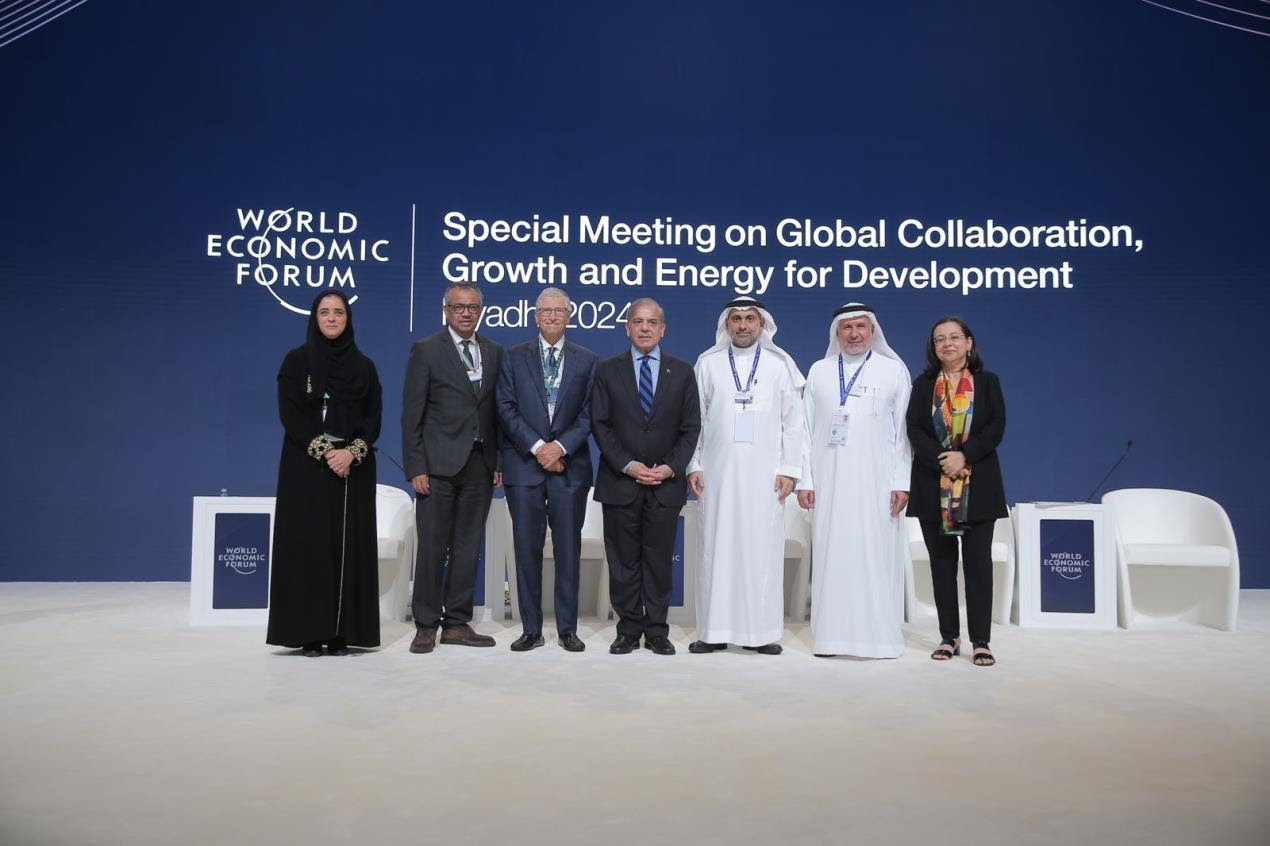
The Double-Edged Legacy
Bill Gates has built a reputation as the world’s most ambitious philanthropist. Few private citizens have poured as much money, energy, and intellect into tackling global problems. Vaccines, seeds, IDs, climate research—his fingerprints are everywhere. And yet, the very scale of his influence exposes the contradictions.
To his supporters, Gates is a pragmatic visionary who refuses to let politics, bureaucracy, or ideology slow the march of progress. To his critics, he is the embodiment of techno-solutionism—treating poverty, hunger, and inequality as engineering glitches instead of deeply political struggles. The truth probably lies between these poles. Gates has saved millions of lives with vaccines and put neglected issues like malaria back on the global agenda. But he has also pushed models that concentrate power in corporations, undercut local solutions, and overlook the messy, unscalable work of justice and equity.
In the end, Gates’ story forces us to ask: who gets to decide the future of the planet? Billionaires with money and labs—or communities with lived experience and the right to shape their own destiny? His legacy is still being written. The question is whether it will be remembered more for the lives it saved, or for the futures it sidelined.








